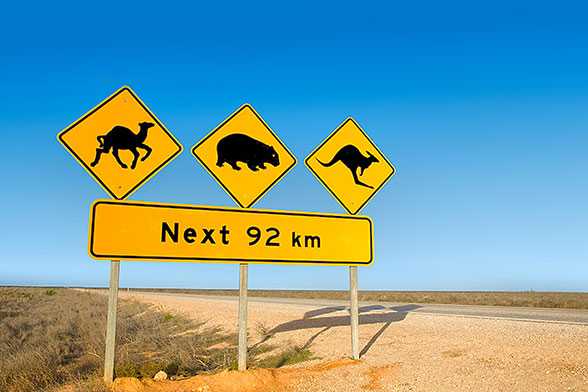Australia’s Wild Camels

When you think of the archetypal Australian animal, camels are unlikely to be considered, but in fact the country holds one of the highest populations of wild camels anywhere in the world. Introduced by traders in the 19th century to transport goods across the difficult outback, the creatures found themselves unwanted as technology advanced. Now, with their numbers continuing to grow exponentially, Australia’s enormous population of camels raises serious questions about the preservation of a delicate ecosystem, and the need to find humane methods to control their numbers.
Wild Camels in Alice Springs, Northern Territory
Camels were first introduced to Australia by English settlers, who imported camels from Pakistan and India, in recognition of their ability to withstand the difficult desert terrain. Over 20,000 camels were imported during the 19th century, predominantly single-humped or dromedary camels. These were used by settlers to transport both goods and people, and ironically, for the construction of rail and telegraph lines.
Once technology permitted easier ways of communication and transport however, camels were no longer required – and their Asian handlers, commanded to destroy them, instead opted to release them into the wild. Now, decades on the population of feral camels descended from these has risen to between 750,000 to a million or even more. With such high numbers of camels, their very ability to withstand the difficult terrain they were brought in to conquer has turned them into a serious pest upon the Australian ecological landscape.
With few natural predators, the numbers of camels have only continued to grow despite attempts to cull the population by taking serious action.
Wild Camels in Australian Red Centre, Northern Territory
Dromedary camels are capable of drinking an extensive amount of water, and can travel of 70 km a day in search of new watering holes. They have also been found to consume foliage off tall trees, as well as crops and grazing land cultivated by local farmers. While a severe draught has affected camel numbers, they continue to a be a pest to the Australian landscape, and the economic impact of camels has been calculated to be worth over 10 million Australia dollars.
Feral camels in Australia have contaminated or dried out valuable water sources, reduced crops, and impacted the numbers of other endangered flora and fauna across the outback. Camels have also disrupted farming communities, and caused damage to sites of cultural significance to Aborigines. Consequently, one of the biggest measures to control the camel population has been a cull, with several thousand killed annually.
Animal welfare groups, both in Australia and internationally, have highlighted concerns with the mass killing of camels, particularly with reports of camel carcasses simply left to rot after being shot dead. For this reason, some campaigners, including a wealthy Arab businessman, Ali Sultan aj Hajri, have sought to protect the camel population – by shipping them to what was once their natural home, or seeking alternative, cruelty free methods to protect their population.
While some thousand may be exported, a vast population still remains and can be seen across large portions of the Australian outback. If you travel to Alice Springs, don’t miss the opportunity to enjoy an authentic desert adventure, as you ride a camel along red sand tracks and forest trails.